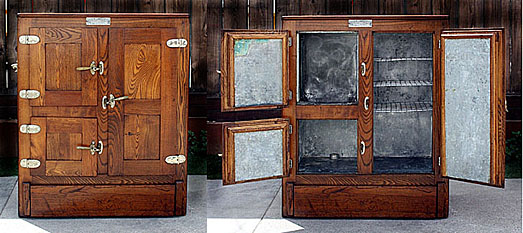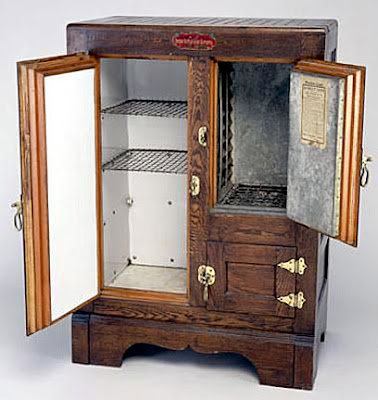 QUESTION: My grandfather left me a beautiful creche which he said his father brought over from Germany in the late 19th century. Can you tell me anything about this and if it is, in fact, German?
QUESTION: My grandfather left me a beautiful creche which he said his father brought over from Germany in the late 19th century. Can you tell me anything about this and if it is, in fact, German?
ANSWER: You, indeed, have a German creche. From its design, I’d say it dates from the 1890s, possibly a bit before. During the 17th century, Nativity scenes, promoted by the Capuchin, Jesuit and Franciscan orders, gained in popularity as a way for common people to express their joy during the Christmas season.
 Nativity scenes gained popularity in the 17th century, promoted by the Capuchin, Jesuit and Franciscan orders. By the 18th century, three centers of crèche culture had emerged—Naples, Italy, Provence, France, and southern Germany and Austria.
Nativity scenes gained popularity in the 17th century, promoted by the Capuchin, Jesuit and Franciscan orders. By the 18th century, three centers of crèche culture had emerged—Naples, Italy, Provence, France, and southern Germany and Austria.
Over the years, the Nativity has been portrayed in many ways. In America, the most popular form is the crèche, a word meaning "manger" or "crib" in French. Carved from wood—although some makers use ceramics, glass, straw, fabric, or even plastic—and painted, a crèche usually depicts the entire Nativity scene, including the manger, a star, angels, shepherds, kings and the Holy Family. Although most are miniature in scale, a few church crèches are almost life-size.
 Although he didn’t originate the idea, historians credit St. Francis of Assisi with popularizing the Nativity scene. From Italy, the idea spread north across the Alps and finally came to the U.S. with German settlers.
Although he didn’t originate the idea, historians credit St. Francis of Assisi with popularizing the Nativity scene. From Italy, the idea spread north across the Alps and finally came to the U.S. with German settlers.
Supposedly, a rich man, Giovanni Vellita, approached St. Francis in December, 1223, asking how he could serve God. St. Francis told him to build a simple, little stable just outside Assisi in the cave at Greccio. This was a time when the average man learned about his faith from the plays he watched, the songs he heard, and the art that lined the walls of the churches.
Much of the celebration of Christmas occurred in churches for a long time. The common worker, much less the very poor, weren’t given much of a place in these celebrations. St. Francis wanted to give the poor people a chance to celebrate. And so the story goes, as midnight approached that Christmas Eve, a great procession wound its way out of Assisi and up the hill to Greccio. Everyone came carrying candles to this new manger they had built for the Holy Child. They celebrated mass that night. Surrounded by an ox and a donkey and by the people of Assisi, all playing the parts of the shepherds and folk of Bethlehem.
Long after St. Francis died, the people of Italy continued to build stables for the Christ Child. Among wealthy Italian families, the simple manger became something incredibly magnificent, the grand Italian Presepio. Naples became the center of the biggest presepi workshops. By the 18th century, these crèches took up whole rooms, indeed, sometimes whole floors of great homes. People traveled from villa to villa to visit and admire these incredible displays, which often took months and a great deal of money to complete.
Sancta Maria Ad Praesepe, later to become the Basilica Santa Maria Maggiore in Rome, contains the first recorded free standing set of creche figures, sculpted from stone by Amolfo Di Cambio in 1282. For some time after, nearly all the creches made were life-sized stone or wood. Those in Tyrolean churches had statues with elaborate Baroque costumes. At the same time, inexpensive Nativity scenes made out of painted paper became available to those who couldn’t afford carved figures.
 Artisans construct crèches or Nativity sets from a variety of materials. The characters can be carved from wood, formed from wax, papier-mache, or clay, or hand painted on cardboard. They stand in or in front of buildings, ranging from Alpine stables and guest houses to romantic Roman ruins. Others have Middle Eastern-style structures with minarets and domes.
Artisans construct crèches or Nativity sets from a variety of materials. The characters can be carved from wood, formed from wax, papier-mache, or clay, or hand painted on cardboard. They stand in or in front of buildings, ranging from Alpine stables and guest houses to romantic Roman ruins. Others have Middle Eastern-style structures with minarets and domes.
But the best—elaborate and intricately carved figures of wood—came from Bavaria. Their creators stained them with paint to make them lifelike. German creches , often called krippen, can also be made of cast metal, cast painted plaster, cardboard with painted or printed artwork, turned wood or clay. Each Christmas, in scenes made up of rocks, branches, evergreens and moss collected in the woods by the family’s children just before the holiday, the krippe is reborn. Christmas morning finds these scenes around the base of the family’s Christmas tree in what’s called a putz or tree yard.
 |
 For many, collecting crèches is an act of faith. Their crèches provide an expression of their Christianity. Mormons are great collectors of crèches. Creating a Nativity scene in a church has been a long-standing tradition among Catholics And there has been increasing interest in collecting Nativity sets among Protestants.
For many, collecting crèches is an act of faith. Their crèches provide an expression of their Christianity. Mormons are great collectors of crèches. Creating a Nativity scene in a church has been a long-standing tradition among Catholics And there has been increasing interest in collecting Nativity sets among Protestants.
But mostly, people collect crèches because they’re personal, a reflection of intimate family life. They’re about humanity, not religious dogma or ritual. Moving Nativity sets from the church to the home has made them a popular art form.
 Among collectible creches, those hardest to find today are those predating World War II. Adolf Hitler had many of the German molds for creche figures destroyed. At the time, Germany was the premiere maker of creches.
Among collectible creches, those hardest to find today are those predating World War II. Adolf Hitler had many of the German molds for creche figures destroyed. At the time, Germany was the premiere maker of creches.
Nativity sets and crèches vary in value, from some worth over $1,100 to others worth just $5. But for many collectors, their value is intrinsic. They’re also easy to find and buy, which makes them fun to collect. At one point, the Ruby Lane site on the Internet had no less then 300 sets for sale.
To read more articles on antiques, please visit the Antiques Articles section of my Web site. And to stay up to the minute on antiques and collectibles, please join the over 50,000 readers by following my free online magazine, #TheAntiquesAlmanac. Learn more about "Sacred Artifacts" in the 2025 Holiday Edition, online now. And to read daily posts about unique objects from the past and their histories, like the #Antiques and More Collection on Facebook.
















































